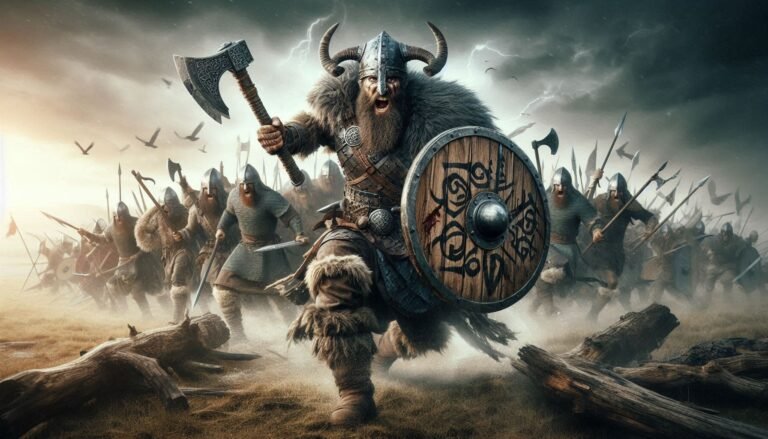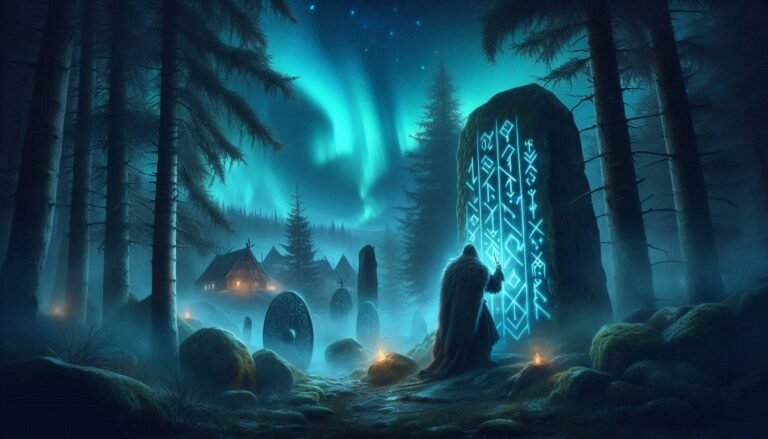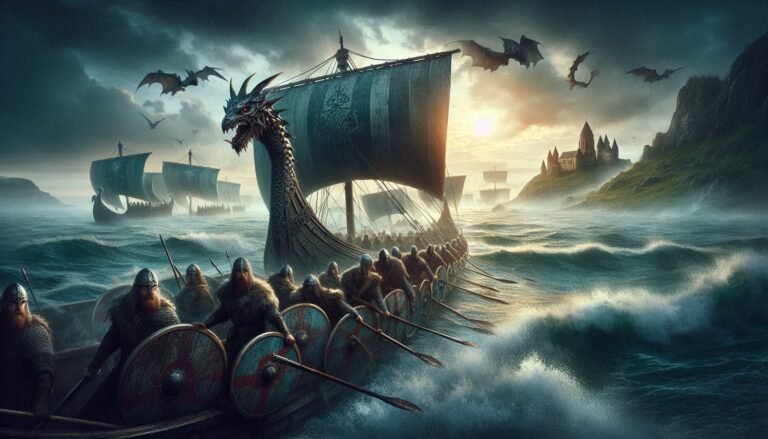Ragnar Lothbrok is one of the most famous Viking figures in history, a name that evokes images of fierce battles, epic raids, and legendary sagas. But who was he really? Was Ragnar a real Viking warlord, or is he simply a mythological creation inspired by multiple historical figures?
This article explores the legend of Ragnar Lothbrok, separating fact from fiction and analyzing his impact on Viking history and modern culture.
The Legend of Ragnar Lothbrok
The primary sources for Ragnar’s life come from medieval sagas and chronicles, including:
- The Saga of Ragnar Lothbrok
- The Tale of Ragnar’s Sons
- The Anglo-Saxon Chronicle
- The Gesta Danorum (a Danish history by Saxo Grammaticus)
These texts paint Ragnar as a mighty warrior, king, and explorer who launched legendary raids against England and France in the 9th century. His story includes dramatic battles, mythical creatures, and even divine ancestry.
Ragnar’s Origins and Famous Lineage
According to the sagas, Ragnar was the son of Sigurd Ring, a legendary king of Sweden, and a descendant of the Norse god Odin. His nickname, “Lothbrok” (meaning “hairy breeches”), allegedly came from his habit of wearing animal skin trousers to protect himself from snake bites.
Ragnar’s Wives and Family
The sagas describe Ragnar as having several legendary wives, including:
- Lagertha – A shieldmaiden who fought alongside him.
- Thora – A noblewoman whom he won by slaying a giant serpent.
- Aslaug – A sorceress and the mother of his most famous sons.
His sons, including Bjorn Ironside, Ivar the Boneless, Sigurd Snake-in-the-Eye, and Hvitserk, became powerful Viking leaders in their own right.
Ragnar’s Greatest Raids and Conquests
The Siege of Paris (845 CE)
One of the most famous stories about Ragnar is his raid on Paris in 845 CE. Leading a fleet of Viking longships up the Seine River, Ragnar and his warriors laid siege to the city, demanding a massive ransom of 7,000 pounds of silver from the Frankish king Charles the Bald.
This event is historically recorded, though it is unclear if Ragnar himself led the raid or if it was another Viking leader using his name.
Raids on England
Ragnar is also credited with numerous raids on Anglo-Saxon England, targeting Northumbria, Mercia, and Wessex. He allegedly met his death at the hands of King Aella of Northumbria, who captured him and threw him into a pit of venomous snakes.
Before he died, Ragnar is said to have uttered the famous words: “How the little piglets will grunt when they hear how the old boar suffered.”
This prophecy foretold that his sons would avenge his death, leading to the Viking invasion of England by the Great Heathen Army in 865 CE.
Fact vs. Fiction: Was Ragnar Real?
While Ragnar’s exploits are legendary, historians debate whether he was a real historical figure or a composite character based on multiple Viking leaders.
Evidence For His Existence
- Historical Viking Raids: The events associated with Ragnar, such as the 845 CE raid on Paris and Viking invasions of England, are well-documented.
- Ragnar’s Sons Were Real: Figures like Bjorn Ironside and Ivar the Boneless are historically recorded, which suggests they may have had a famous father.
- Multiple Viking Leaders Named Ragnar: Some historians believe Ragnar’s legend blends the lives of several Viking chieftains into one epic story.
Reasons for Doubt
- Exaggerated Sagas: Many accounts of Ragnar’s life contain mythological elements, making it hard to separate truth from fiction.
- No Contemporary Records: There are no firsthand Viking-era records confirming Ragnar’s existence; most accounts were written centuries later.
The Legacy of Ragnar Lothbrok
Impact on Viking History
Even if Ragnar Lothbrok was not a single historical figure, his legend inspired generations of Vikings to explore, raid, and expand their influence across Europe. His story reinforced Viking values of bravery, exploration, and revenge.
Ragnar in Popular Culture
Ragnar’s legend remains alive today through books, films, and television.
- TV Series: Vikings (2013–2020) – Played by Travis Fimmel, this show introduced Ragnar’s story to a global audience.
- Video Games: Assassin’s Creed Valhalla (2020) – Features Ragnar’s sons and references to his legacy.
- Books & Comics – Many Norse mythology books and comics continue to reimagine Ragnar’s adventures.
A Legendary Viking Warrior
So, was Ragnar Lothbrok real? The truth is likely a mix of history and myth. While there is no concrete proof that he was a single person, the events and descendants linked to his name suggest he may have been an amalgamation of multiple Viking chieftains.
Regardless of whether he truly lived, Ragnar’s legend endures, influencing how we view the Vikings and their impact on history. His story of ambition, conquest, and vengeance remains one of the most compelling tales of the Viking Age.
Real or not, Ragnar Lothbrok will never be forgotten.



